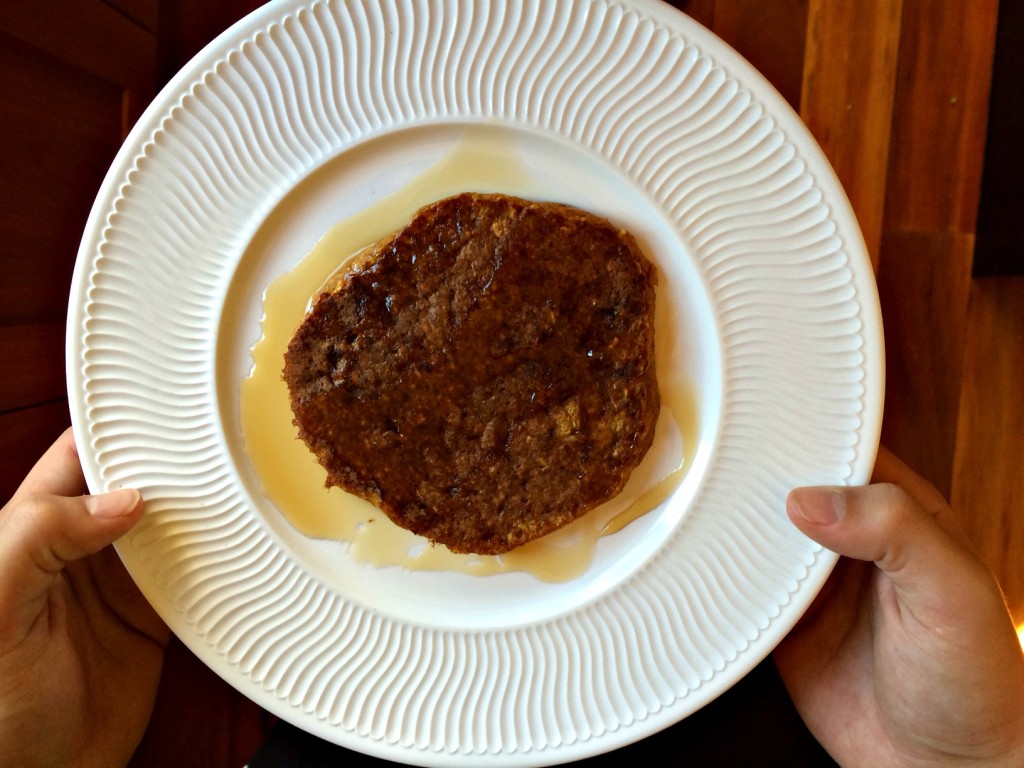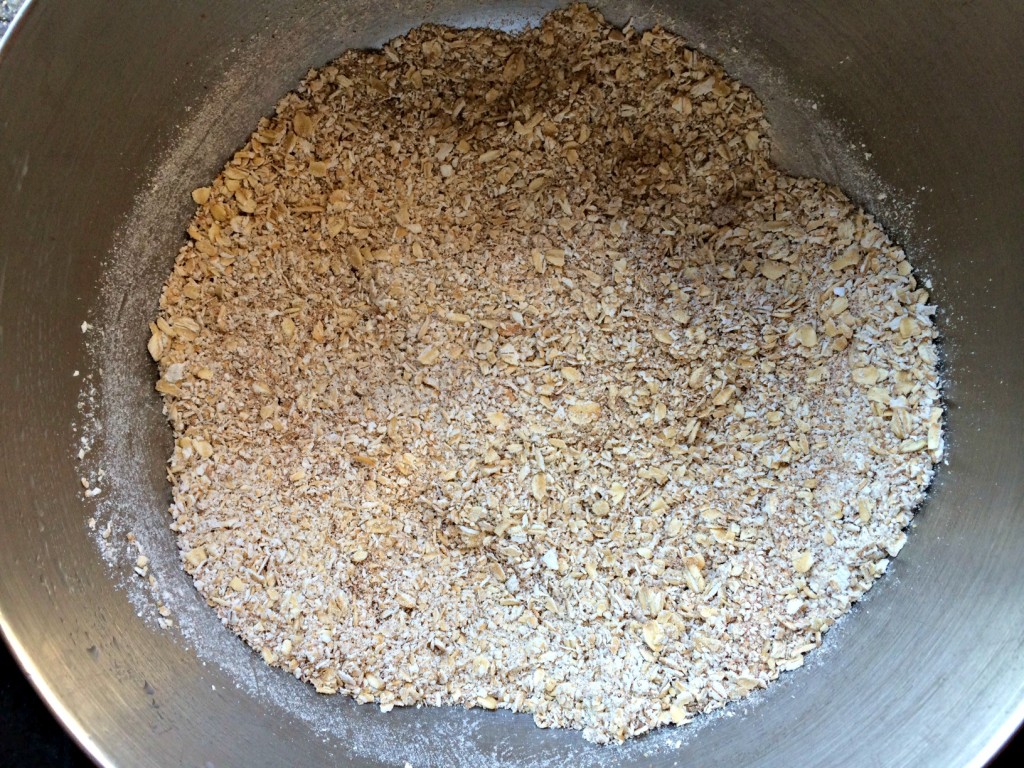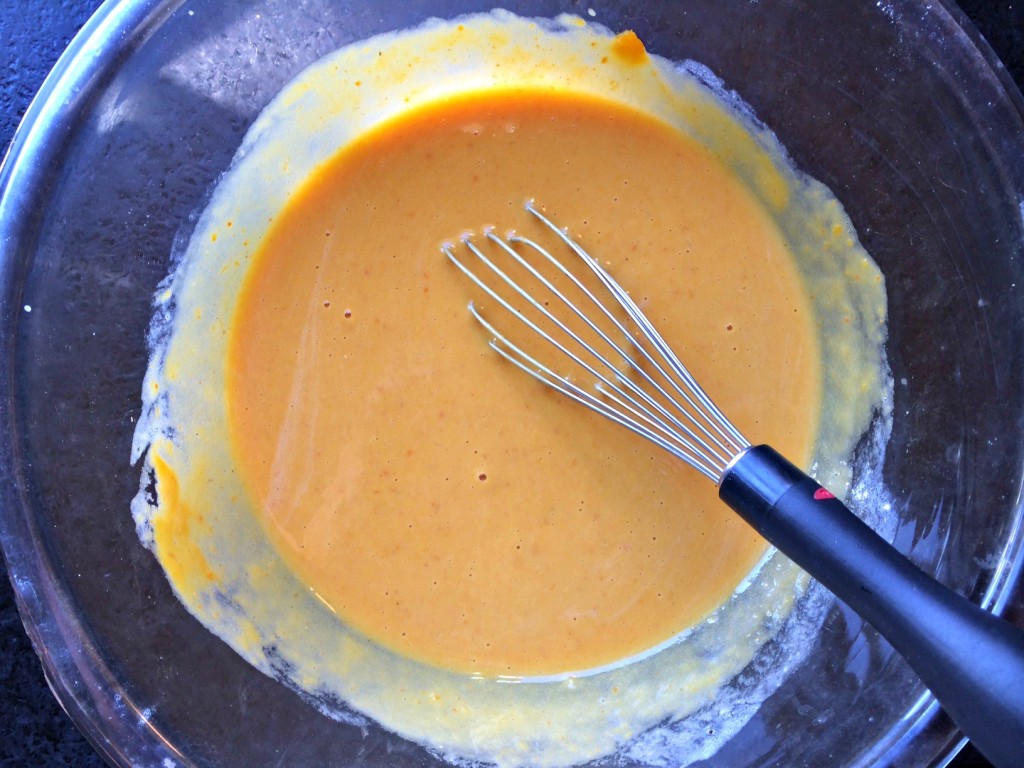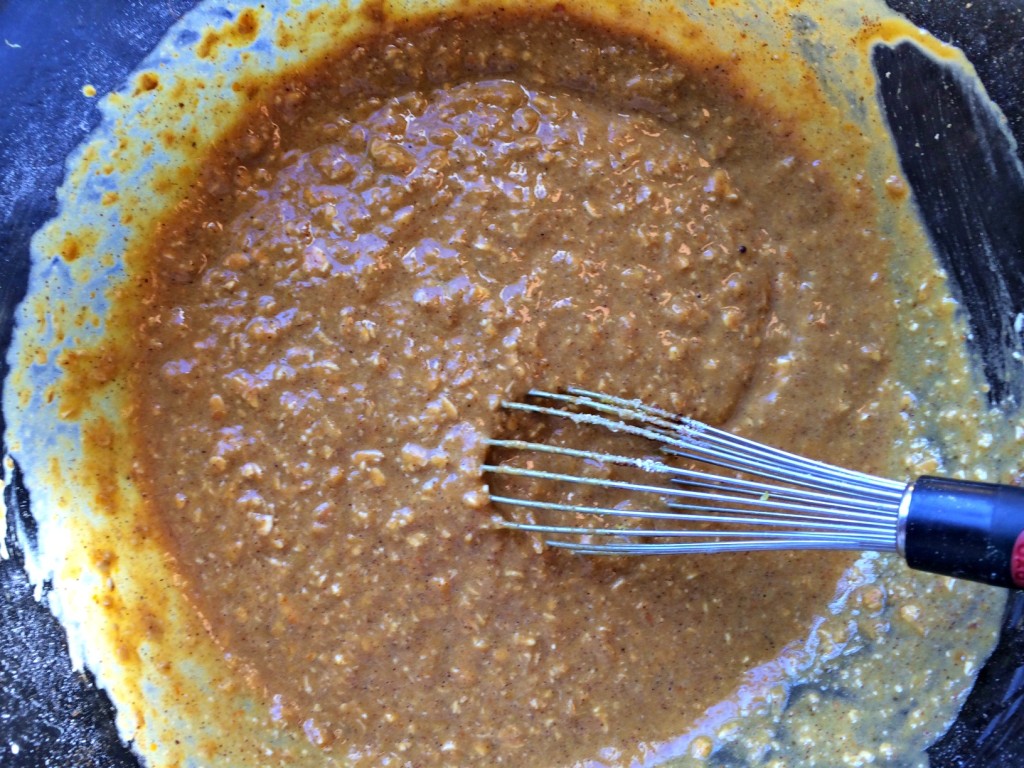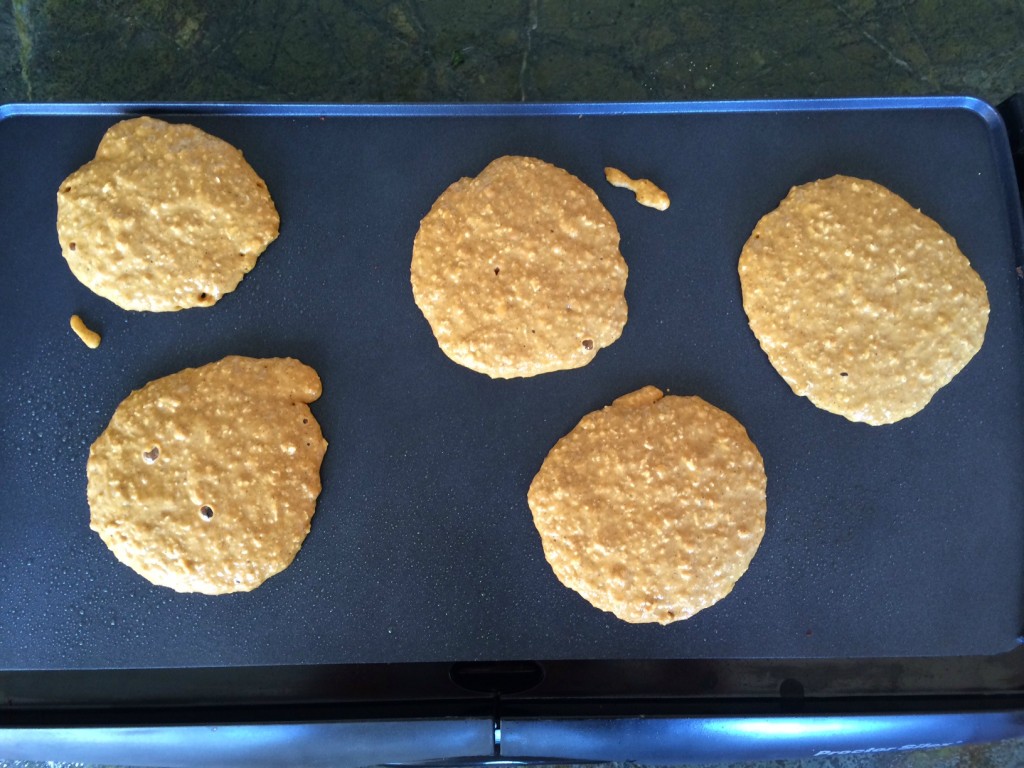I love the Fall because it signals to me that I should start eating pumpkin again. Now, I love just about any squash but there is something so yummy about pumpkin. I also really love breakfast. In fact, I think it is my most favorite meal of the day! Imagine my delight when I can combine two things I love in one sitting- breakfast and pumpkin? It doesn’t get much better than that! That is why I love this recipe for Gluten Free Pumpkin Pancakes. (I made this recipe with butter and eggs but it is really easy to convert to a vegan recipes by substituting coconut oil for the butter and flax eggs for the chicken eggs.)
These pancakes are amazing because they combine tons of different warming spices like cinnamon, cloves, ginger and nutmeg- perfect to warm and nourish the body on these cold winter days. These spices signal to me that the holidays are right around the corner!
I used my food processor to grind my oats to make the oat flour. As you can see they still had some oat texture to them. ( I found when I made subsequent batches that my Magic Bullet NutriBullet worked like a dream to produce really fine oat flour.) You have to decide if you want your pancakes to have more texture to them or if you prefer a more traditional finely ground flour. Also, if you have someone in your life with gluten issues, be sure your oats say gluten free on the package. Bob’s Red Mill Gluten Free Whole Grain Rolled Oats is an excellent brand.
I love the amazingly vibrant color of the wet ingredients in this photo. You always hear about “Eating the rainbow” to maximize health. When I look at this picture, I can just imagine all the healthy beta carotene headed into my body with every bite of pancake! Extremely high in fiber and low in calories, pumpkin is loaded with disease-fighting nutrients, including potassium, pantothenic acid, magnesium, and vitamins C and E.
Ingredients
- 1 cups of gluten- free oats
- zest of half lemon
- 2 tbs of coconut sugar
- 1/2 tsp of baking soda
- 1/2 tsp of salt
- 1 tsp of cinnamon
- 1 tsp of ginger
- 1/4 tsp of cloves
- 1/4 tsp of nutmeg
- 1 tbs of flax seed ground
- 1/2 cup of pumpkin puree (not pumpkin pie mix)
- 1/2 cup of milk (I used almond)
- 2 tbs of butter or coconut oil
- 2 eggs (could use flax eggs)
Instructions
- Place oats in food processor or NutriBullet to grind to flour.
- Mix all dry ingredients together.
- In seperate bowl, mix all wet ingredients including pumpkin.
- Add wet ingredients to dry ingredients.
- Stir well.
- Cook pancakes on well greased griddle or in a pan. Flipping only after first side is well browned.
- These are dense, thick pancakes so they take a little while to cook.
- Serve with maple syrup. (In my house, we add a generous dose of nut butter too!)
- Enjoy!
This recipe adapted from Cookie and Kate.
This post contains affiliate links.

